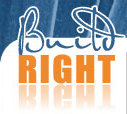Introduction
A hazard is a source or potential source of injury or disease.
Examples of this are in two groups:
- Acute hazards are immediate in effect and simple to control, such as falls from heights.
- Chronic hazards usually take a long time to develop and are more difficult to identify, such as exposure to asbestos fibres.
A risk is the likelihood of a hazard resulting in injury or disease, together with the seriousness of the potential injury or disease.
For example, trenches are potential hazards. It is not practical to remove the trenches, but you can erect barriers to identify them.
Before commencing any tasks on a building site, all possible hazards and actual risks should be identified and appropriate safety procedures put in place.
